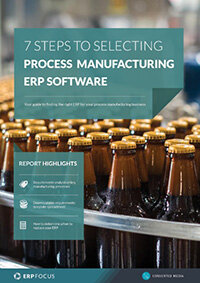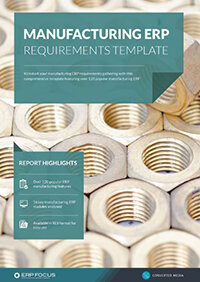Must have quality control features for process manufacturing ERPs
Today’s manufacturing disciplines are both complex and largely quality driven. These assertions are particularly accurate when applied to ERP platforms, and more importantly, those that relate to systems involving quality control (QC) processes.
Although one may believe that ERP systems should ‘always’ suggest QC processes as part of a selection evolution, as a practical matter, quality capabilities typically differ in utility from brand to brand; usually based on operational scale and/or price. Consequently, we thought we’d discuss various ERP QC ‘must haves’, and what they’re likely to mean for the average-sized process manufacturer.
Why is quality control important for process manufacturers?
Before we get to the heart of the matter, it should be noted that there is a significant difference between ERP for discrete manufacturing versus process manufacturing, since the two types utilize dissimilar levels of quality management. Regardless, however, each production type creates finished goods as a final business goal, after first merging various sub-elements.
Compare process manufacturing ERP features with our free ERP comparison tool
However, where the engagement of ERP-driven process manufacturing involves active quality validation throughout a particular production chain, discrete manufacturing usually doesn’t, since these manufacturers typically purchase sub-components on the basis of baseline quality, previously validated by one or more third-party supply-chain providers. This is the reason that process-based manufacturing is sometimes referred to as ‘recipe-making’, rather than discrete producers who simply assemble lists of sub-components, and why the former evolution represents a much more daunting QC challenge.
For example, pharmaceutical manufacturing requires constant quality monitoring throughout the manufacturing chain, since the product evolution involves various chemical and/or synthetic elements that demand attention to shelf-life, or other counter-indicative substances. If a process step is missed or misqualified, an entire batch can be lost, triggering the loss of thousands of dollars, or worse, sick patients who rely on whatever product may be required.
Key quality control features your ERP should include
- Ensure the ERP QC system can provide procedural instructions, track and measure events, and archive results. As the saying goes, "if it's not written down, it didn't happen." Therefore, ERP quality control for process manufacturing must be able to define and account for every step, from raw material delivery to finished goods.
- The enterprise QMS must define and apply an active process priority method. This is especially true for flow-monitored substrates, elements, and compounds used in pharma product creation. This also directly supports any necessary regulatory or policy investigations.
- Active rules/policies are another must-have. Modern process manufacturing and its ERP quality management modules must comply with regulatory, state, national, and international standards throughout the entire product creation and production lifecycle.
Obviously, these three suggestions are only a small sample of the type of requirements necessary to employ a proper ERP QC system, but you should get the point pretty quickly.
Free white paper

Top 10 Manufacturing ERP Software Comparison
Compare the best manufacturing ERP systems

Featured white papers
-

Manufacturing ERP Implementation Checklist
Over 70 actionable steps to rolling out new manufacturing ERP software
Download -

7 Steps to Selecting Process Manufacturing ERP
Your guide to finding the right ERP software for your process manufacturing business
Download -

Manufacturing ERP requirements template
Over 120 critical manufacturing ERP features in one downloadable spreadsheet
Download
Related articles
-

The best ERP systems for process manufacturing
Consider these ERP systems when selecting your next process manufacturing ERP
-

CMMC Compliance: What Aerospace and Defense Manufacturers Need to Know
Key insights on CMMC compliance, deadlines, and securing DoD contracts with CMMC 2.0 certificatio...
-

Top benefits of ERP inventory management
How an ERP helps inventory management including four key advatages

